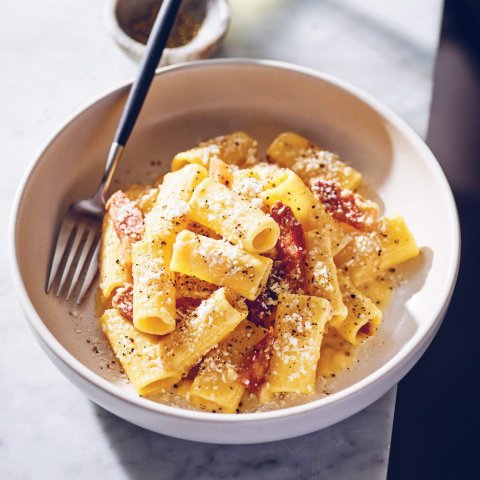
Authentic Carbonara
A by-the-book recipe for traditional Roman carbonara
Ingredients
- 700 g (9 oz) rigatoni
- 350 g (12½ oz) guanciale (cured pork cheek)
- 4 whole eggs
- 2 egg yolks
- 300 g (10½ oz) Pecorino Romano, grated plus extra to serve
Instructions
- Bring a large saucepan of salted water to the boil. Add the pasta and cook for the time indicated on the packet.
- Meanwhile, remove any rind from the guanciale and cut the meat into chunky strips about 1 cm (1⁄2 in) thick.
- Place a large frying pan over high heat, add the guanciale and fry for 4–5 minutes, or until the fat melts and the meat becomes crunchy.
- Meanwhile, beat the eggs and egg yolks well until smooth, then mix in the pecorino and season with a generous grind of black pepper.
- Once the pasta is al dente, drain and add to the pan with the guanciale, stirring well to coat the pasta in the guanciale fat.
- Turn off the heat. If you are feeling confident, add the egg mixture to the pan, tossing the ingredients together rapidly to avoid the egg scrambling. Alternatively, the foolproof method is to add the pasta and guanciale into the bowl with the eggs and stir well. The heat from the pasta will cook the egg and the sauce will remain silky smooth.
- Serve with a sprinkling of pecorino and a good grind of black pepper.
Notes
In Italy, carbonara is usually prepared with ‘pasta gialla’ eggs, a special type of local egg with an intense yellow yolk, which gives the dish a distinctive yellow colour. Regular eggs will create a paler carbonara, but the flavour will still be the same.